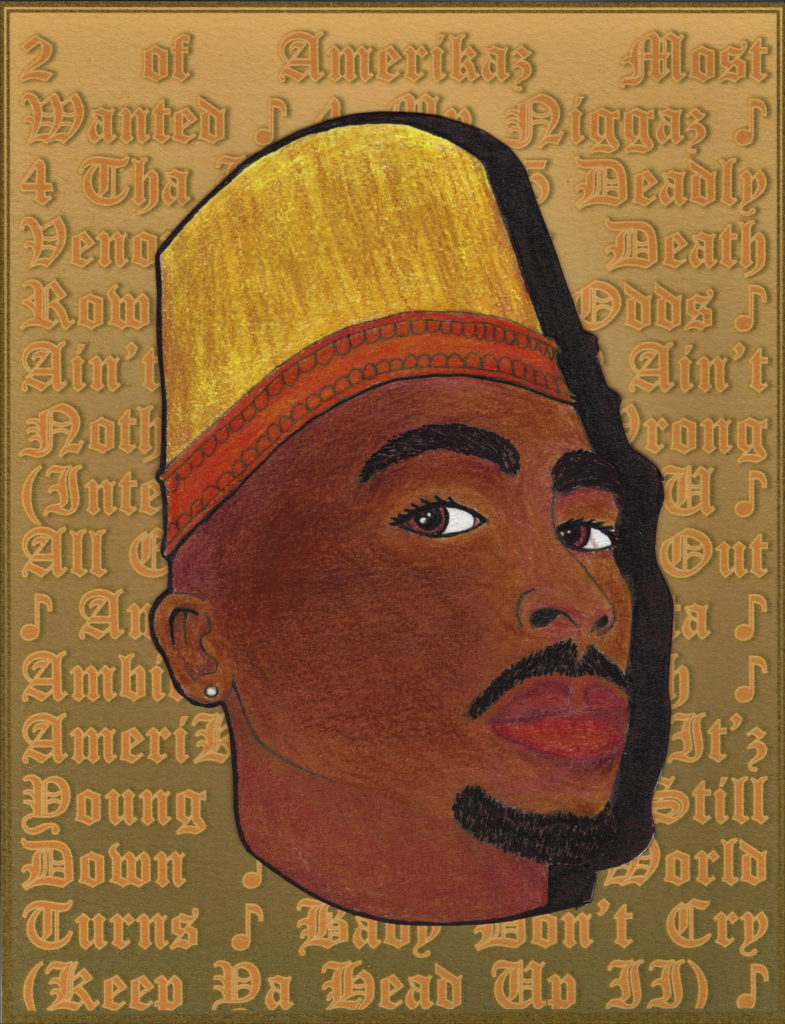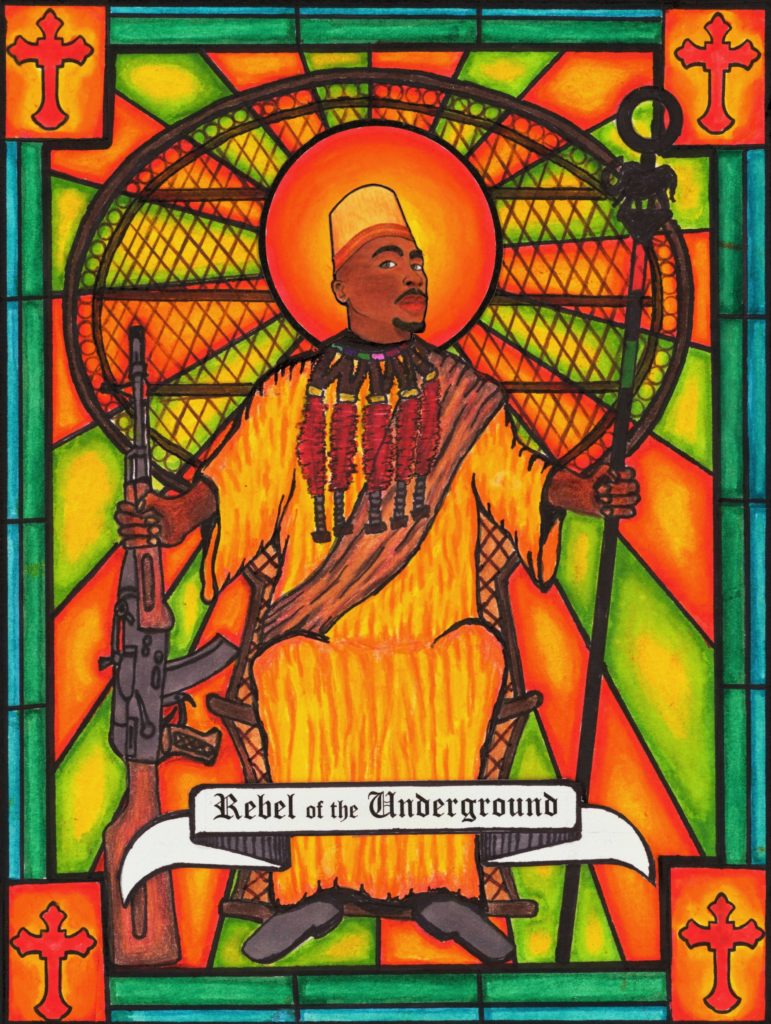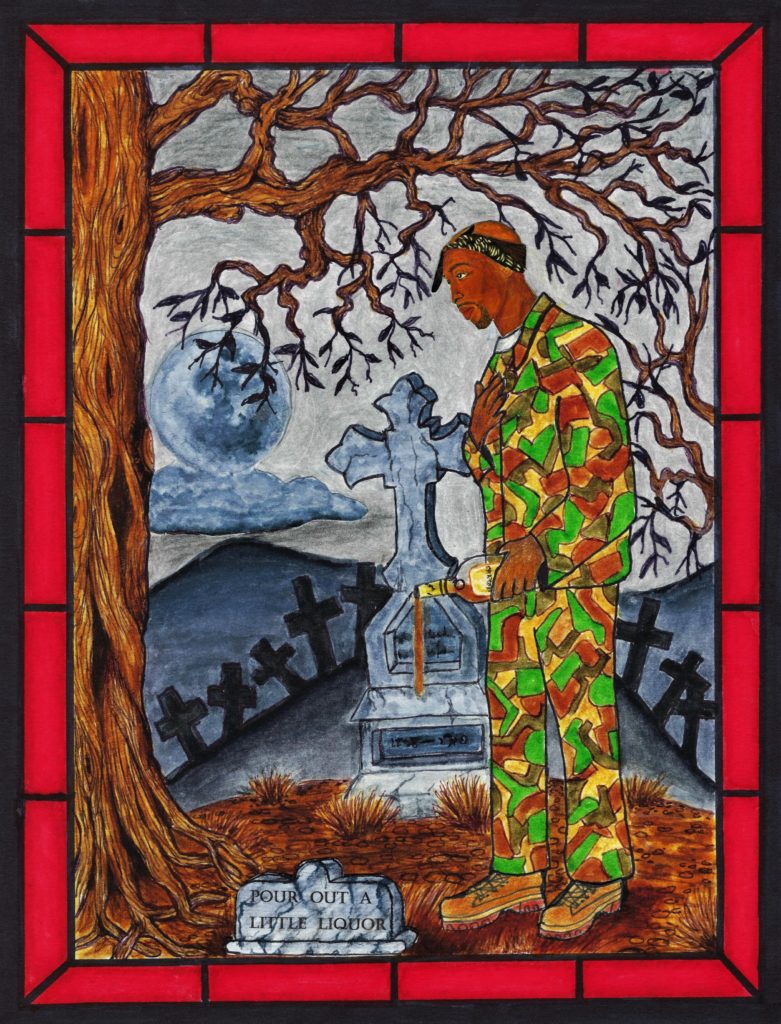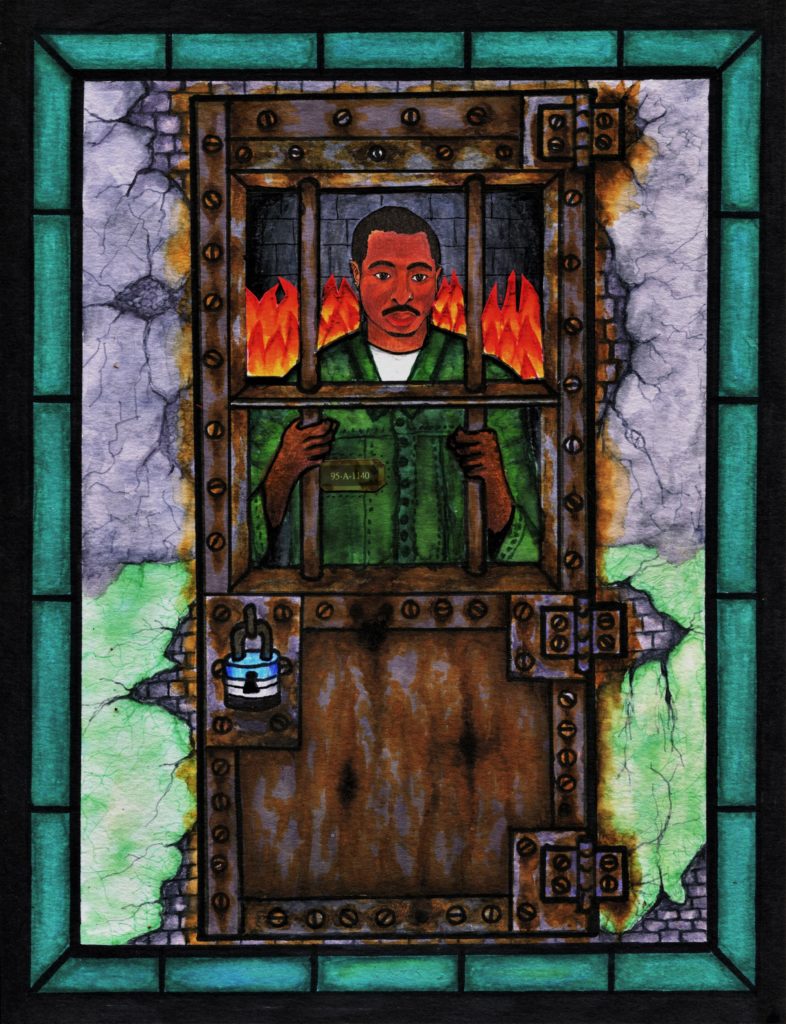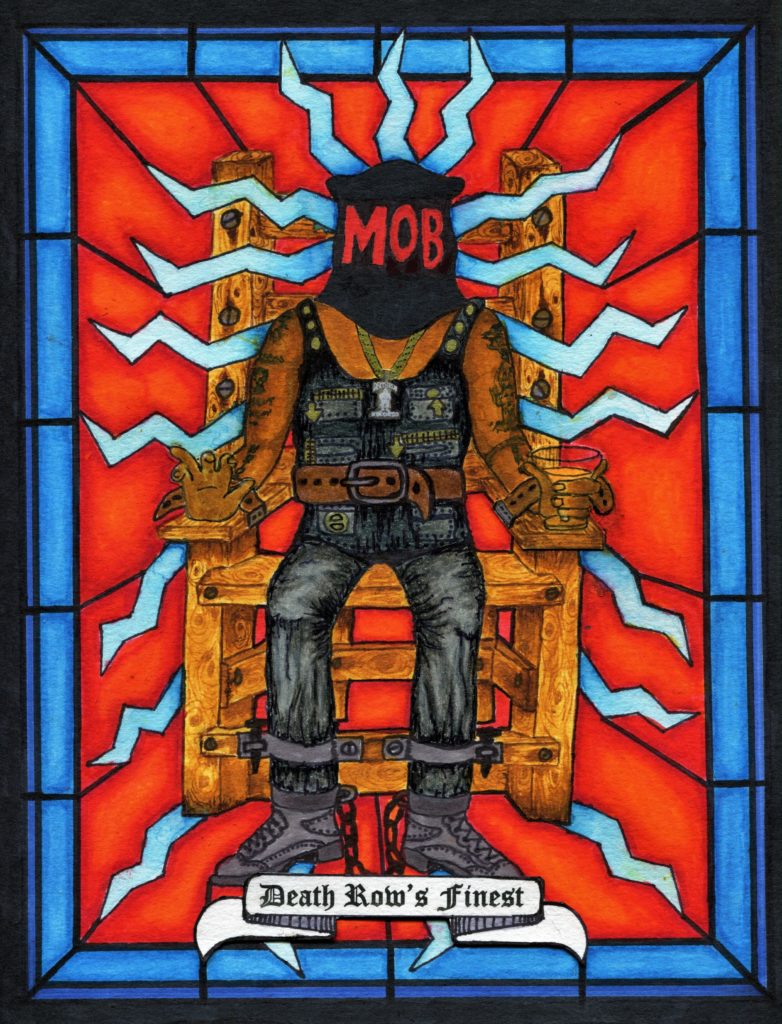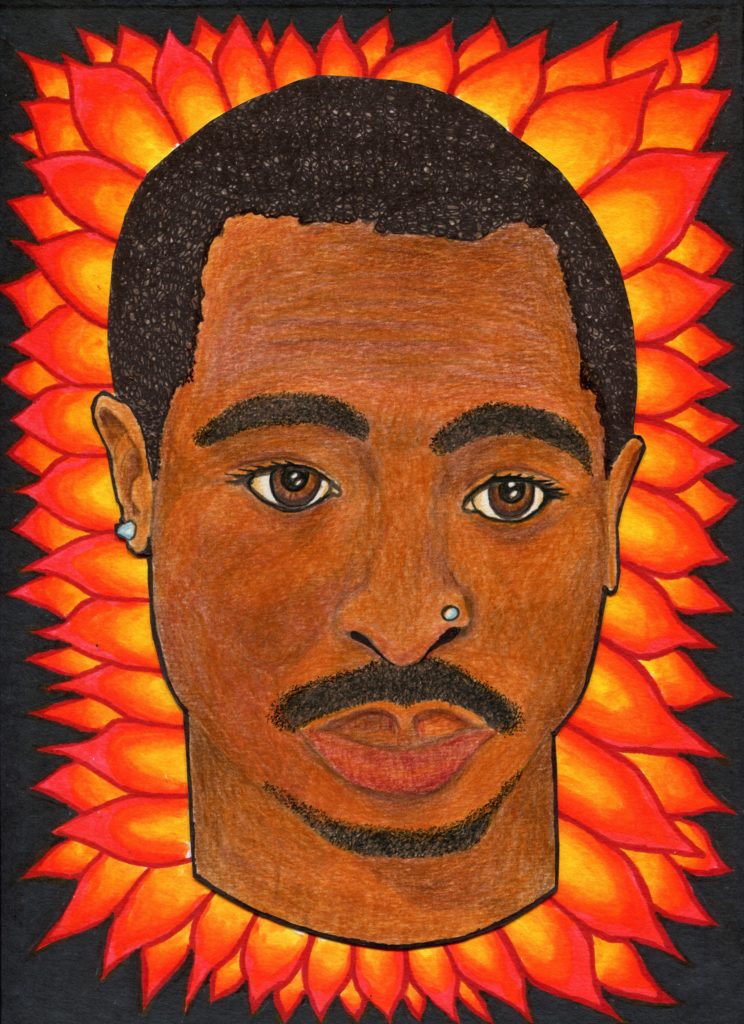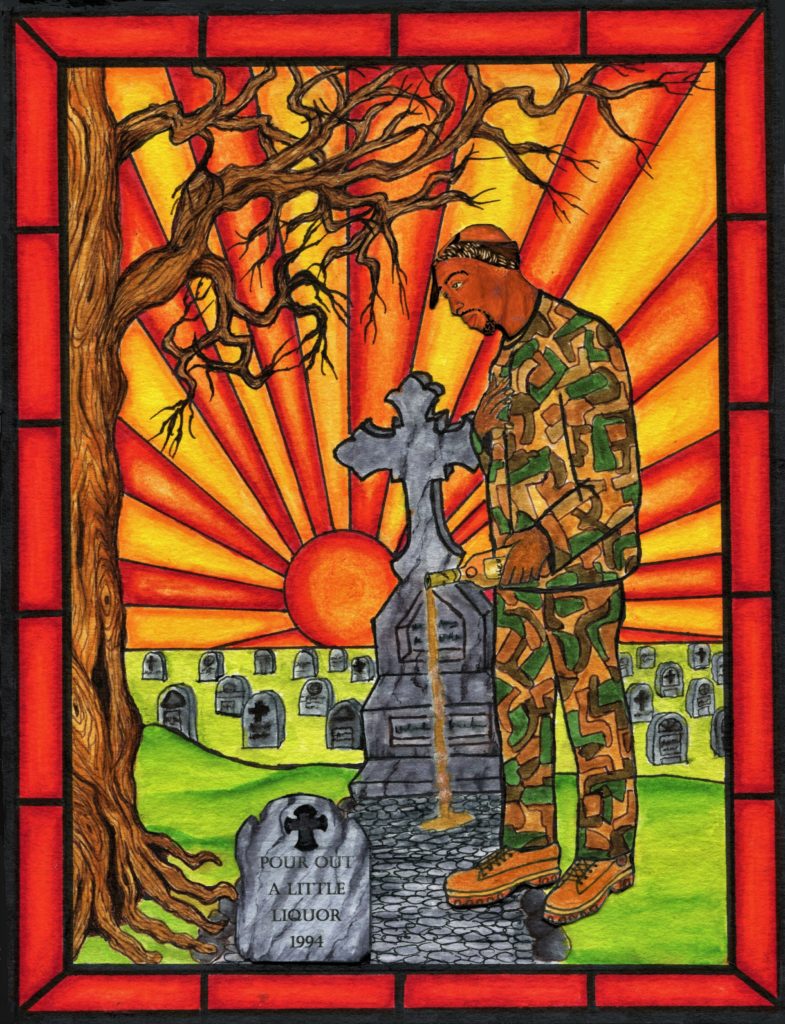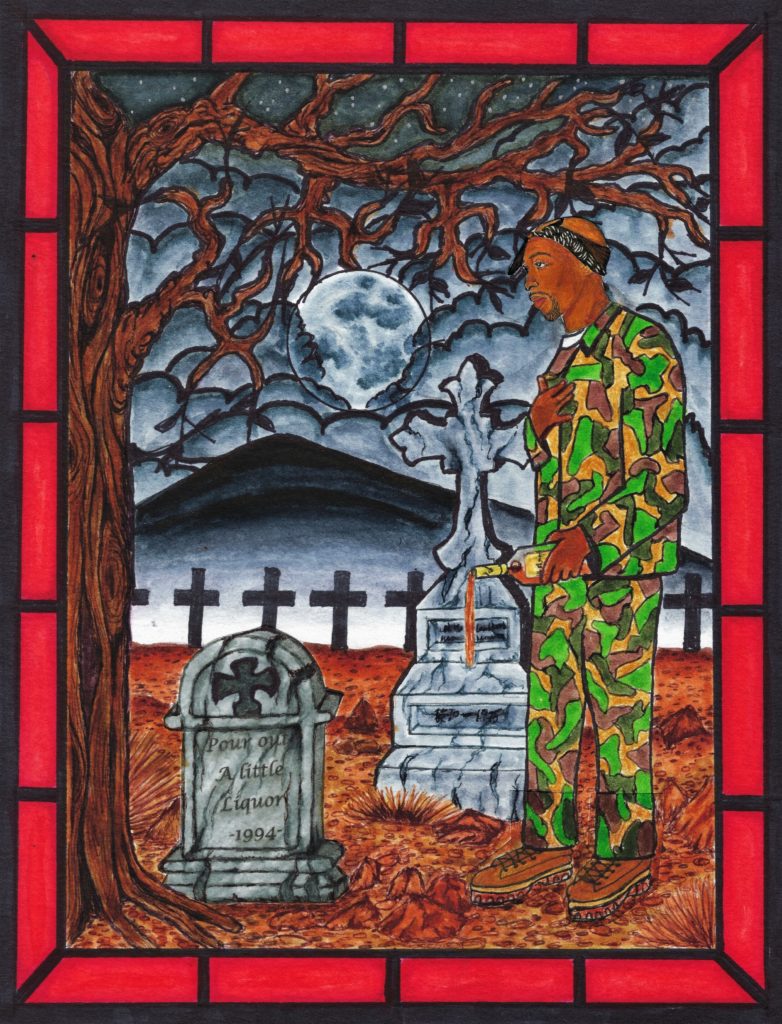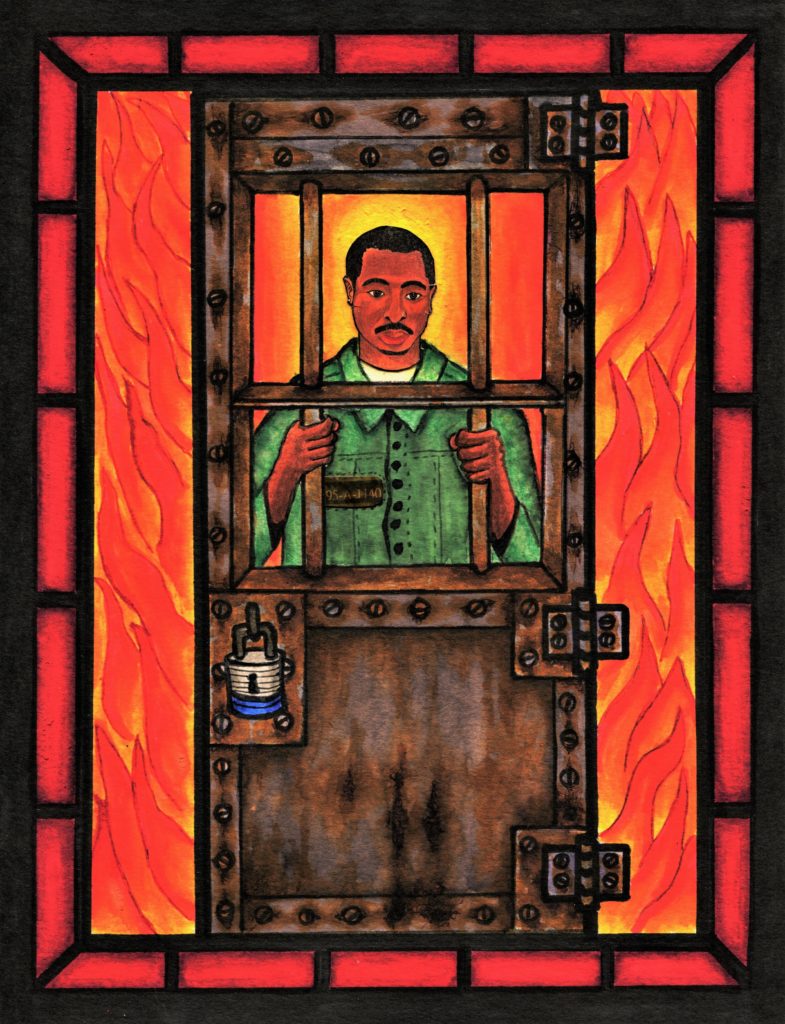Encyclopedia Illustrations
My father, Eugene, created a series of illustrations of Tupac for my book, The Tupac Encyclopedia – Volume 1, from concepts I gave him. Unfortunately, to include them in their original color would have made my book absurdly expensive. My most important goal when writing the book was for people to learn about and become more interested in Tupac. I wanted the book to be affordable, not an expensive coffee table tome few would read. Unfortunately, that meant the interior illustrations would be black and white. I’m not upset about that; they look good in either format. Anyway, the illustrations detailed below represent various moments in Tupac’s life:
“Rebel of the Underground”
As related on the book’s first page, the cover concept came to me on September 13, 2015, the nineteenth anniversary of Tupac Shakur’s death, while I was attending Mass at the Notre-Dame Cathedral in Paris. I want this book to be a Bible for Tupac’s listeners, so I thought an illustration inspired by stained-glass portraits of saints would suit that aim. When I returned home, I drew a sketch of Tupac on a wicker throne, posed in the way that Black Panther co-founder Huey Newton was in a 1967 photograph taken by Blair Stapp, before giving the sketch to my dad to fully realize. Like Huey, Tupac grasps two objects. Rather than a rifle and a spear, Tupac holds an AK-47 and a wooden staff reminiscent of the one he carries in the Digital Underground’s “Same Song” music video. Tupac’s attire on the cover should be recognizable to people familiar with that video.
“Pour Out a Little Liquor”
This illustration on page 177 combines Tupac’s music and acting careers. “Pour Out a Little Liquor,” which is written on one of the tombstones in the illustration, was a single off the soundtrack of Tupac’s 1994 film, Above the Rim. In the illustration, Tupac is pouring out a bottle of liquor in a cemetery and, like his character Birdie in Above the Rim, he is dressed in military camouflage.
“Hell 4 a Hustler”
Tupac often compared life in prison to an eternity in hell and this illustration represents the time he spent in Rikers Island and the Clinton Correctional Facility after being convicted of sex abuse on December 1, 1994. If you look closely at this illustration on page 313, you’ll notice that Tupac has hair (he did not shave his head while he was imprisoned) and spot the identification number on his uniform (Tupac’s State of New York Department of Correctional Services ID number was 95-A-1140).
“Death Row’s Finest”
Tupac, who became a Death Row Records inmate in September 1995, sometimes counted himself as one of “Death Row’s Finest” (during the outro of the “To Live & Die in L.A.” music video, for example) and this illustration on page 545 reflects that brief but important period of his career. It puts Tupac in an electric chair, thereby paying tribute to the iconic Death Row logo created by Henry “Hen Dogg” Smith. Note the glass of Alizé in Tupac’s left hand, the MOB hood, and the Jean Paul Gaultier leather vest that Tupac wears on the cover of All Eyez On Me, Tupac’s first Death Row album.
Alternate Artwork
The following illustrations, which begin on page 679, are variations of those above. I prefer the ones in the book’s body, but I wanted readers to see these alternates. Some of my friends who saw my father’s illustrations prefer them, so maybe you will, too.
